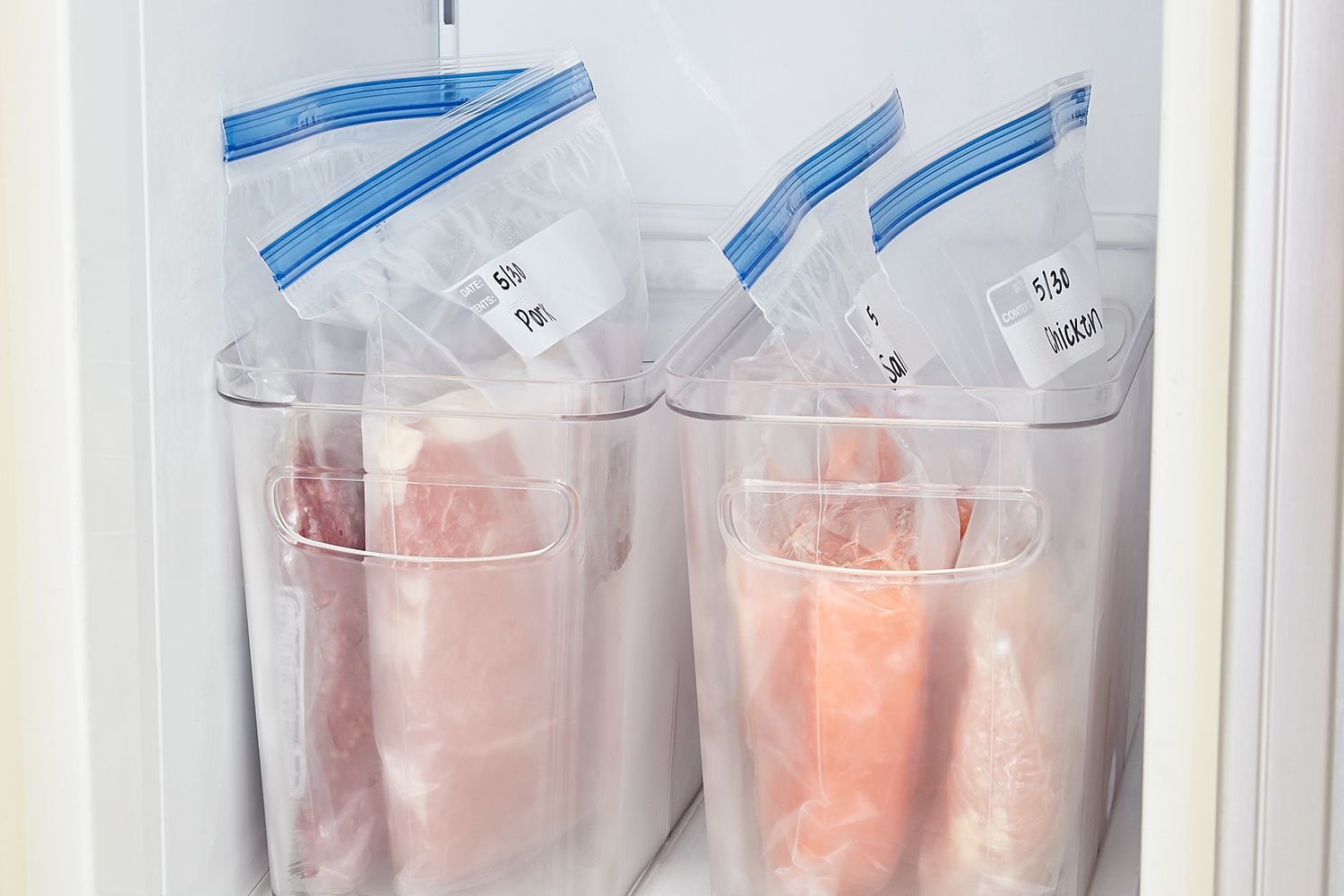How To Properly Store Meat In The Freezer
Are you tired of your frozen meat losing its flavor and texture in the freezer? Wondering how to properly store meat in the freezer to maintain its quality? Look no further! In this blog article, we’ll guide you through the simple yet effective steps to ensure your meat stays fresh, juicy, and ready to be cooked whenever you need it. From the right packaging techniques to the ideal temperature settings, we’ve got you covered. So, get ready to learn how to properly store meat in the freezer and say goodbye to freezer burn and wasted food!
How to Properly Store Meat in the Freezer
Storing meat in the freezer is a great way to extend its shelf life and ensure that you always have a supply of delicious, high-quality protein at hand. However, it’s important to follow proper storage techniques to maintain the quality and safety of the meat. In this article, we will explore the best practices for storing meat in the freezer, covering everything from packaging methods to thawing techniques.
Section 1: Preparing Meat for Freezing
Before you store meat in the freezer, there are a few important steps you should take to ensure its longevity and quality.
1.1 Choosing the Right Cuts
When selecting meat for freezing, it’s essential to choose cuts that freeze well and have a longer shelf life. Lean cuts of beef, pork, and poultry tend to freeze better than fatty cuts. Opt for boneless cuts whenever possible, as bones can increase the risk of freezer burn.
1.2 Trimming and Portioning
Trimming excess fat and dividing the meat into portion-sized pieces before freezing can help maintain quality and make it easier to thaw later on. Remove any gristle or unwanted parts and separate the meat into individual or family-sized portions.
1.3 Proper Packaging
Properly packaging meat is crucial for preventing freezer burn and maintaining flavor. Follow these guidelines:
- Wrap the meat tightly in plastic wrap to protect it from air and moisture.
- Place the wrapped meat in freezer-safe, airtight bags or containers.
- Remove as much air as possible from the packaging before sealing.
- Label each package with the type of meat, cut, and date of freezing.
Section 2: Organizing the Freezer
A well-organized freezer not only helps you locate your meat quickly but also maintains a consistent temperature throughout. Follow these tips to organize your freezer effectively:
2.1 Group Similar Meats Together
Organize your freezer by grouping similar meats together. For example, place all beef in one section, pork in another, and poultry in a separate area. This makes it easier to find what you need without having to dig through the freezer.
2.2 Use Storage Containers and Racks
Invest in storage containers, baskets, or racks to separate different types of meat. These containers help maximize space and prevent cross-contamination, ensuring that the flavors of different meats don’t mix.
2.3 Keep an Inventory List
Maintain an inventory list of the meats stored in your freezer. This can be as simple as a spreadsheet or a pen-and-paper list taped to the freezer door. Update it regularly as you use or restock your meats. This way, you’ll always know what you have on hand.
Section 3: Freezing and Thawing Techniques
Understanding the correct freezing and thawing techniques is crucial for preserving the quality and taste of meat.
3.1 Freezing
Follow these steps to freeze meat properly:
- Cool the meat completely in the refrigerator before freezing to prevent temperature fluctuations.
- Place the meat in the freezer as soon as it has cooled.
- Do not overcrowd the freezer; leave enough space for proper air circulation.
- Set the freezer temperature to 0°F (-18°C) or below for optimal storage.
3.2 Thawing
When it comes to thawing meat, it’s important to do it safely to prevent bacterial growth. Here are a few methods to consider:
- Refrigerator thawing: Place the wrapped meat on a plate or in a shallow dish in the refrigerator. Allow enough time for the meat to thaw slowly, usually overnight or up to 24 hours.
- Cold-water thawing: If you need to thaw meat quickly, submerge the wrapped meat in a leak-proof plastic bag and place it in a bowl of cold water. Change the water every 30 minutes to maintain a cold temperature. Thawing this way usually takes 1-3 hours, depending on the size and thickness of the meat.
- Microwave thawing: Follow the microwave manufacturer’s instructions for defrosting meat. Be careful not to partially cook the meat during the defrosting process, as this can affect its texture and taste.
Section 4: Freezer Shelf Life and Quality
To ensure the best quality, it’s important to understand the freezer shelf life of different meats.
4.1 Beef
– Ground beef: 3-4 months
– Steaks and roasts: 6-12 months
– Stew meat: 3-4 months
4.2 Pork
– Chops and roasts: 4-6 months
– Bacon: 1-2 months
– Sausages: 1-2 months
4.3 Poultry
– Whole chicken or turkey: 1 year
– Chicken or turkey pieces: 9 months
– Ground poultry: 3-4 months
Section 5: Safety Precautions
To ensure the safety of your frozen meat, follow these important precautions:
5.1 Temperature Monitoring
Regularly check the temperature of your freezer to ensure it remains at or below 0°F (-18°C). A higher temperature can lead to decreased quality and increased risk of spoilage.
5.2 Storage Duration
While meat can remain safe to eat indefinitely at 0°F (-18°C), its quality may degrade over time. It’s best to use frozen meat within the recommended storage durations mentioned earlier for optimal quality.
5.3 Quality Assessment
Always check the quality of frozen meat before cooking or consuming it. Look for any signs of freezer burn, such as discolored patches or a dry, leathery texture. Discard any meat that shows signs of freezer burn or an off odor.
5.4 Thawed Meat
Once meat is thawed, it should be cooked promptly to prevent bacterial growth. Avoid refreezing meat that has been thawed unless it has been thoroughly cooked.
Properly storing meat in the freezer is essential for maintaining quality, safety, and flavor. By following the tips outlined in this article, you can ensure that your frozen meat stays fresh and ready for delicious meals whenever you need it.
Store Your Meats In The Freezer For Over One Year Using This Method; No Freezer Burn & Fresh Tasting
Frequently Asked Questions
How should I properly store meat in the freezer?
Properly storing meat in the freezer is essential to maintain its quality and prevent the growth of harmful bacteria. Here are some guidelines:
Should I store meat in its original packaging?
It’s best to transfer meat from its original packaging to airtight freezer-safe containers or resealable bags. This helps maintain the quality and prevents freezer burn.
What temperature should my freezer be set to for meat storage?
Keep your freezer temperature at or below 0 degrees Fahrenheit (-18 degrees Celsius) to ensure the meat stays frozen and safe to consume for an extended period.
How long can I store meat in the freezer before it goes bad?
The storage time depends on the type of meat. Generally, beef, pork, and lamb can be stored for 6-12 months, while poultry for 9 months. It’s best to label the meat with the date of freezing for easy tracking.
What are some tips for preventing freezer burn on meat?
To prevent freezer burn, remove any excess air from the packaging before storing. Wrapping the meat tightly with freezer paper or aluminum foil can further protect it. Additionally, using freezer-safe containers can provide an extra layer of protection.
Can I refreeze meat that has been thawed?
It is generally safe to refreeze meat that has been thawed in the refrigerator. However, the quality may deteriorate, and it’s better to consume it within 24-48 hours after thawing rather than refreezing it again.
How can I organize my freezer to store meat efficiently?
Organize your freezer by placing raw meat on the bottom shelf to prevent any juices from dripping onto other items. Use clear labels to easily identify different types of meat, and rotate older packages to the front for easier retrieval.
Final Thoughts
Properly storing meat in the freezer is crucial to maintain its quality and ensure its safety for consumption. To achieve this, it is essential to follow a few key steps. Firstly, make sure to package the meat in airtight containers or freezer bags to prevent freezer burn. Next, labeling each package with the type, cut, and date will help with organization and rotation. Lastly, arranging the meat in an organized manner, with the oldest items at the front, will make it easier to locate and use items efficiently. By following these guidelines, you can extend the shelf life of your meat and ensure its optimal freshness.






